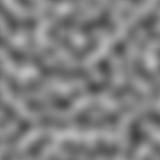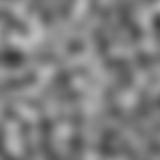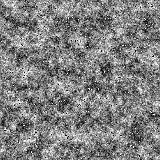
The Point3 class defines the characteristics of points in 3D space. These values are also known as 3D vectors, and contain 3 component floating point numbers. All the coordinates passed to and from 3ds max are in these values. See also 2D and 3D Point Literals.
Literals
[ <expr>, <expr>, <expr> ]
Examples:
[x, y, z]
[10, 10, 10]
[sin x, cos y, tan z]
x_axis -- equivalent to [1,0,0]
y_axis -- equivalent to [0,1,0]
z_axis -- equivalent to [0,0,1]
Constructors
point3 <x> <y> <z>
<color> as point3
Properties
<point3>.x : Float -- the x coordinate
<point3>.y : Float -- the y coordinate
<point3>.z : Float -- the z coordinate
Operators
<point3> == <point3>
<point3> != <point3>
<point3> + <point3_or_number>
<point3> - <point3_or_number>
<point3> * <point3_or_number>
<point3> / <point3_or_number>
Standard vector arithmetic. If the second operand is a number, the operation is performed on each component of the value.
<point3> * <matrix3>
Transforms point3 into the coordinate system specified by matrix3.
<point3> * <quat>
rotates point3
- <point3>
unary minus
Methods
Creates a new copy of the point3 value. For example:
newPos = copy oldPos
The new value contains a copy of the input point3 value, and is independent of the input point3 value.
Returns the length of the vector.
Returns the vector dot product.
Returns the vector cross product.
Returns the point3 value normalized such that the vector length equals 1.
Returns the distance between the points - length of (point 2 û point 1).
Generates a pseudo-random point between the given points.
Returns a Matrix3 value representing an arbitrary axis system using point3 as the "up" direction.
Returns a Matrix3 value with the normal specified by the given point as the Z axis. The translation portion of the Matrix3 value will be [0,0,0]. The components of the scale portion are the inverse of the values required to normalize the point3 value. For example,
MatrixFromNormal [0,0,1]
MatrixFromNormal [0,1,1]
will return
(matrix3 [1,0,0], [0,1,0], [0,0,1], [0,0,0])
(matrix3 [0,-0.707107,0.707107] [1.41421,0,0] [0,1,1] [0,0,0])
-- 3D Noise Functions
A floating point noise function over 3D space, implemented by a pseudo-random tricubic spline. The return value is in the range -1.0 to +1.0. Given the same point3 value, the noise3() function always returns the same value.
The same function as noise3 in which the phase can be varied using the second parameter. The return value is in the range -1.0 to +1.0.
turbulence <point3> <frequency_float>
This is a simple fractal-loop turbulence built on top of the noise3 function. The second parameter controls the frequency of the turbulence. The return value is in the range 0.0 to +1.0.
fractalNoise <point3> <H_float> <lacunarity_float> <octaves_float>
This is a fractal function of 3D space implemented using fractional Brownian motion. The function is homogeneous and isotropic. It returns a float.
The parameters are as follows:
point3 - The point in space at which the noise is computed.
H_float - The fractal increment parameter in the range [0,1]. When H_float is 1 the function is relatively smooth; as H_float goes to 0, the function approaches white noise.
lacunarity_float - The gap between successive frequencies, best set at 2.0.
octaves_float - The number of frequencies in the function.
All the noise functions are based on code and algorithms in the book "Texturing and Modeling: A Procedural Approach", Musgrave, Peachey, Perlin and Worley. Academic Press, ISBN: 0-12-228760-6.
Examples
The following script shows the use of various literals, constructors, properties, operators, and methods of the Point3 class.
The following script was written as a test bed for the noise functions. This script displays a 2 dimensional slice of the noise function output as a bitmap. By changing the noise parameters in lines 4 through 10, and specifying which noise function to evaluate in line 12, you can see the effects of changes in the parameters and using different noise functions.
Script
-- noise functions test bed
b_width=320 -- specify size of bitmap
b_height=320
size=10. -- total distance covered by each row and column
z=0. -- z coordinate of 2D slice
phase=0.5 -- noise4 parameter
frequency=10. -- turbulence parameter
fract_interval=.5 -- fractalNoise parameters
lacunarity=2.
octaves=5
--
whichfunc=1 -- 1 = noise3; 2 = noise4; 3 = turbulence; 4 = fractalNoise
--
b=bitmap b_width b_height -- create the bitmap
for h=0 to (b_height-1) do -- step through each row of the bitmap
(
h_norm=(h as float/(b_height-1))*size -- calculate y coordinate
row = for w=0 to (b_width-1) collect -- collect row of pixel colors
(
w_norm=(w as float/(b_width-1))*size -- calculate x coordinate
noise_val = case whichfunc of -- store result of selected function
(
1: noise3 [w_norm, h_norm , z]
2: noise4 [w_norm, h_norm , z] phase
3: turbulence [w_norm, h_norm , z] frequency
4: fractalNoise [w_norm, h_norm , z] fract_interval lacunarity octaves
)
noise_val = 0.5*(1.+noise_val) -- convert output range to 0. to 1.
white*noise_val -- and multiply by color white
)
setpixels b [0,h] row -- store row of pixels in bitmap
)
display b -- display bitmap in VFB
Output
The following figures show the bitmap generated by the above script for each noise function type.

noise3

noise4

turbulence

fractalNoise